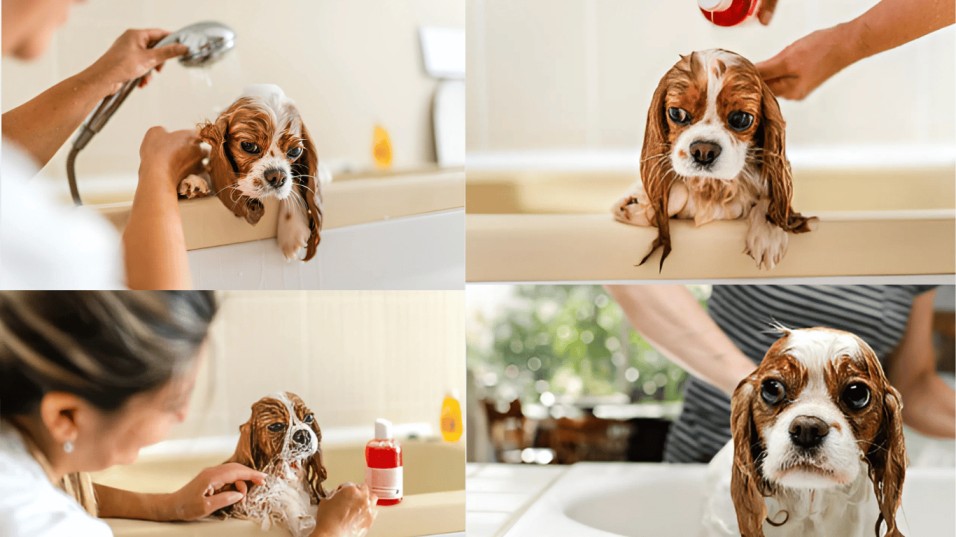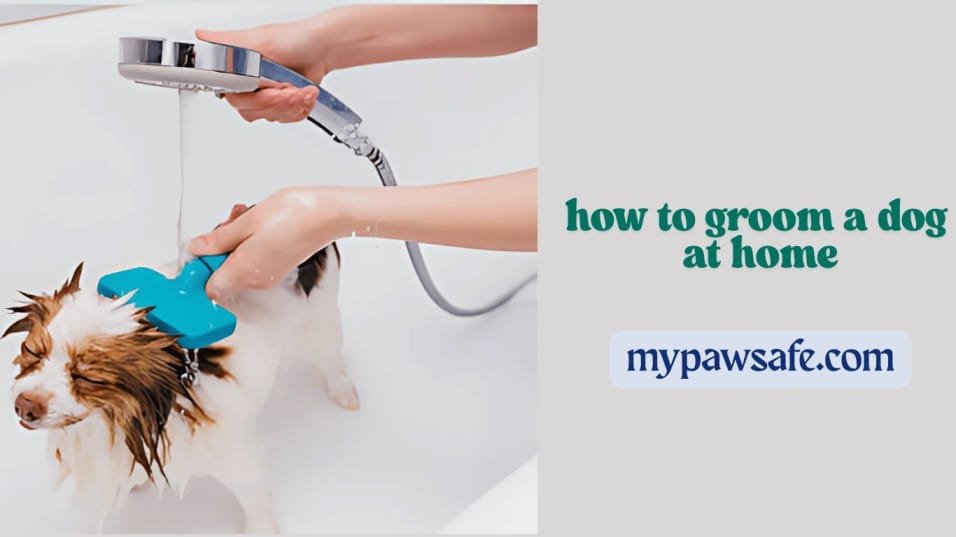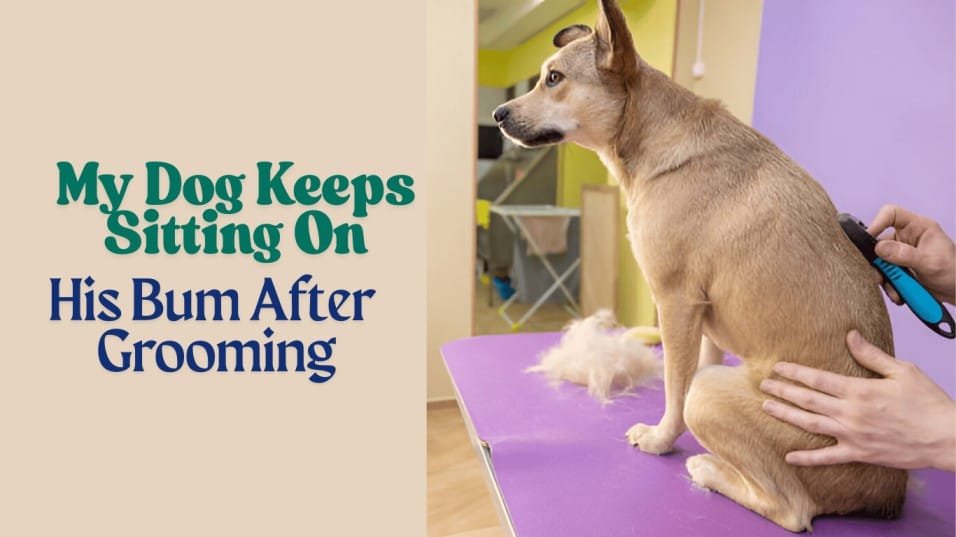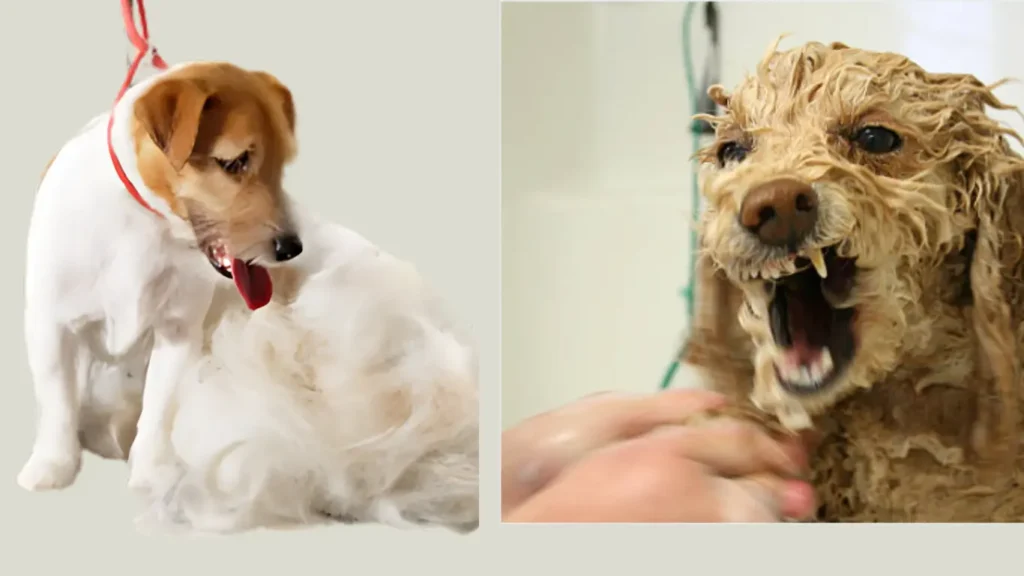I used to wonder how to groom a dog at home. Grooming felt scary and hard. After one big bill at the groomer, I decided to try it myself. Now, it saves me money and brings me closer to my dog.
In this beginner’s guide to dog grooming, I’ll show you easy steps, smart tips, and how to make it fun.
Let’s get started and make grooming a happy time for you and your dog!
How to Groom a Dog at Home: A Step-by-Step Guide for Beginners
Why Grooming Your Dog at Home Matters
I used to think grooming a dog at home was too hard. I was scared I would hurt my dog or mess it up. But after one huge bill at the groomer, I gave it a try. Grooming your dog at home saves a lot of money and time.
I also found it made my dog trust me more. At first, she wiggled and worried. But over time, she got calm and happy. Grooming your dog at home builds trust and makes them feel safe.
Now, I see big changes. My dog looks better, smells great, and feels relaxed. Home grooming keeps your dog clean, happy, and healthy. Plus, it turns into a fun way to bond every week.
What You’ll Need: Essential Grooming Tools
When I first started, I thought I needed fancy gear. I was wrong. You only need a few simple tools to groom your dog at home. Here’s what I use:
One thing I learned fast — not all tools are the same. Human scissors can hurt your dog’s hair or skin. Picking dog-safe tools makes grooming easier and safer.
I found a great kit online. It had clippers, scissors, a brush, and a nail file. It was cheap but worked well! You can start grooming with a basic, budget-friendly kit. No need to spend a lot to do a great job.
How to Groom a Dog at Home Step-by-Step Guideline

Step 1: Preparing Your Space and Supplies
Before you start grooming, set the stage. A calm space can make a huge difference.
I usually set up in my bathroom or laundry room—it’s quiet, easy to clean, and has good lighting. Lay down a towel or non-slip mat to keep your dog from slipping. If your pup gets nervous, play some soft music or give them a favorite toy.
To groom a dog at home, set up a quiet, safe area with good lighting, a non-slip mat, and all your tools ready.
For first-timers, keep everything within reach—brushes, shampoo, towels. You don’t want to run around looking for things with a wet, wiggly dog! I learned that the hard way during my first bath session (soaked and panicked, not my finest hour).
Step 2: Brushing and Detangling the Coat
Brushing is the secret sauce to a clean, happy coat.
Different breeds need different brushes. My German Shepherd? A slicker brush works wonders for her double coat. For curly coats, a comb helps catch the tangles. Brush in the direction of hair growth to avoid hurting their skin.
Brush your dog’s coat in the direction of growth using the right brush for their coat type.
Got mats? Don’t yank. Use your fingers or a detangling spray. Be patient—mats tug at the skin and can really hurt. When I ran into my first serious mat, I thought I’d have to cut it out. But gentle teasing and a slicker brush did the trick.
Step 3: Bath Time Basics
Bath time doesn’t have to be a battle—it can actually be fun!
Use lukewarm water and a dog-specific shampoo. Human shampoos are too harsh for their skin. Wet your dog thoroughly, apply the shampoo, lather gently, and rinse well. I always double-check behind the ears and under the belly where soap likes to hide.
Bathe your dog with lukewarm water and dog-safe shampoo, then rinse thoroughly.
My first bath attempt ended with shampoo in my eye and a soaked living room. Lesson? Keep the leash short and your patience long.
Step 4: Trimming Nails Safely
Nail trimming sounds scary, but it gets easier—promise.
Use a dog nail clipper, and only trim a little at a time. Avoid the quick (the pink part inside the nail) because it can bleed. If your dog has dark nails, trim just the curved tip. I keep styptic powder nearby, just in case.
Trim only the tip of your dog’s nails and avoid cutting into the quick.
At first, I was terrified of hurting her. But now, she lets me do it calmly because she knows it’s quick and painless—and followed by a treat!
Step 5: How to Cut Dog Hair
Cutting hair? Go slow and don’t aim for salon-quality perfection.
If your dog has long or thick hair, dog grooming clippers are a lifesaver. I started with scissors and quickly realized how risky that was. Clippers glide better and reduce the chance of cutting the skin.
Use dog grooming clippers and trim slowly, especially around sensitive areas.
The first time I tried clippers, I accidentally gave my dog a lopsided haircut. She looked like she had a reverse mohawk. We laughed, and she didn’t mind—but lesson learned: go slow and use guides.
Step 6: Cleaning Ears, Eyes, and Teeth
Don’t forget the little details—they matter for your dog’s health.
Use a damp cotton ball to gently clean around the eyes. For ears, avoid sticking anything inside. Just wipe the outer ear with a dog-safe cleaner. For teeth, a dog toothbrush and flavored toothpaste (mine loves chicken flavor!) work great.
Clean your dog’s ears, eyes, and teeth with pet-safe products to prevent infections and bad breath.
I used to skip this step, thinking it wasn’t a big deal. But once I saw plaque buildup and a bit of ear gunk, I knew better. Now it’s part of our routine, and my pup actually enjoys it!
Common Challenges and How to Overcome Them
What to Do If Your Dog Is Scared or Wiggly
Let’s be real—most dogs don’t jump for joy when it’s grooming time. My girl used to bolt the moment she saw the brush. Her tail tucked, ears back… total drama queen. But over time, we figured it out together. If your dog is scared during grooming, stay calm, use a gentle voice, and go slow to build trust.
Start by letting them sniff the tools before you use them. No surprises. I used to show her the brush, then give her a treat just for looking at it. That tiny moment of “Hey, this isn’t so bad” can go a long way. Pair grooming with praise and rewards—it makes the whole process feel more like bonding than a chore.
Grooming an Anxious Dog at Home
Anxious dogs need extra patience—and a little creativity. One trick I learned? Break grooming into tiny sessions. Five minutes here, five there. No pressure. For anxious dogs, it helps to break grooming into short, calm sessions and reward them with treats and love.
Play soft music or distract them with a lick mat smeared with peanut butter. I once groomed half my dog while she was happily licking a frozen treat stuck to the bathroom wall. She barely noticed what I was doing—and that’s a win in my book.
And if they squirm? That’s okay. Pause, breathe, and try again later. You’re not on a timer. It’s not about getting it all done perfectly—it’s about making your dog feel safe every step of the way.
If your dog shows unusual behavior after grooming, like repeatedly sitting on their bum, it might indicate irritation from improper trimming.
Personal Advice: Patience and Positive Reinforcement
Here’s the truth: the most powerful tools in dog grooming aren’t scissors or clippers—they’re patience and love. Use positive reinforcement and stay patient—your dog will start to relax and actually enjoy the process.
Talk to them like you would a nervous friend. Celebrate the little wins. I still remember the first time my dog let me trim all her nails without fuss—it felt like a miracle. She got a belly rub, and I got tears in my eyes (no shame!).
Don’t rush. Your calm energy is everything. Grooming your dog at home will become less of a task and more of a trust-building moment between you and your dog.
Personal Grooming Routine: What Works Best for Me and My Dog
How often should I groom my dog? That was the first question I had when I started this journey. The truth? It depends on your dog’s breed, coat type, and lifestyle—but once you find your rhythm, it becomes second nature.
For my German Shepherd, I brush her three times a week. She sheds like it’s her job, so regular brushing helps keep the tumbleweeds at bay (and saves my vacuum!). I do a full grooming session—bath, nails, ears, and teeth—once a month. That’s what works best for us.
Most dogs need brushing several times a week and a full grooming session once a month, depending on breed and lifestyle.
When she was a puppy, I tried doing everything in one day. Big mistake. We were both exhausted, and it felt like a chore. Now, I spread things out—brushing on Mondays, ears and teeth on Fridays, bath on the weekend. It’s like a mini spa schedule for her (minus the cucumbers on the eyes).
If your dog has a short coat, you might get away with less brushing. But for long-haired or double-coated breeds, staying consistent is key. I also adjust based on the season. During shedding season? Brushing becomes a daily ritual—otherwise, the fur takes over the house!
The biggest lesson I’ve learned? Grooming isn’t one-size-fits-all. It’s about finding a groove that keeps your dog clean and comfortable—and fits your lifestyle too. And honestly, once it’s part of the routine, it doesn’t feel like work. It feels like care.
Final Thoughts: You Can Become Your Dog’s Favorite Groomer!
Yes, you can learn how to groom your dog at home—and your dog might end up loving you even more for it.
If you had told me a few years ago that I’d be brushing, bathing, and trimming my dog at home like a pro, I would’ve laughed out loud. I was that person who ran to the groomer for everything—even a nail trim. But here I am, with clippers in hand, a happy dog by my side, and no panic in sight.
The truth? It’s not about doing it perfectly. It’s about showing up with patience, love, and a few treats tucked in your pocket. I made mistakes. Gave a crooked haircut. Got soaked during bath time. But every step made my dog trust me more—and made me feel more confident.
Grooming your dog at home isn’t just about hygiene. It’s about bonding, saving money, and creating routines that fit your life.
And here’s the best part—you don’t have to do it all at once. Start small. Brush a little. Clip a nail or two. Wipe their ears. Let it build over time. Before you know it, you’ll have your own rhythm, your dog will feel safe, and grooming will feel less like a chore and more like a moment you both look forward to.
💬 Now it’s your turn! I’d love to hear your story.
Have you tried grooming your dog at home? What worked? What flopped? Drop a comment and let’s swap tips—I promise, no judgment if your first haircut turned into a fur-tastrophe (we’ve all been there!).
Because at the end of the day, your dog doesn’t need perfection—they just need you.
FAQ:
How often should I groom my dog at home?
Most dogs need brushing several times a week and a full grooming session once a month. Frequency depends on breed, coat type, and activity level.
What tools do I need to groom my dog at home?
You’ll need a dog brush, clippers, scissors, dog shampoo, nail clippers, and ear-cleaning wipes. A non-slip mat helps keep your dog steady.
How do I keep my dog calm during grooming?
Use a gentle voice, short sessions, and treats. Let your dog sniff the tools first. Play soft music or use a lick mat to keep them relaxed.
What’s the best way to brush my dog’s coat?
Brush in the direction of hair growth using the right brush for their coat type. Use a detangling spray for mats, and avoid pulling to prevent discomfort.
How do I bathe my dog properly?
Use lukewarm water and dog-safe shampoo. Wet the coat, lather gently, and rinse well. Avoid getting water in the ears and dry thoroughly afterward.
How can I safely trim my dog’s nails?
Use a dog nail clipper and trim only the tip. Avoid the quick (pink part) to prevent bleeding. If unsure, trim a little at a time and have styptic powder ready.

We’re the dedicated team behind MyPawSafe.com, with over a decade of combined experience in veterinary care, pet emergency response, and animal behavior. While we prefer to let our work speak for itself, our mission is clear: to provide science-backed, vet-approved advice that helps pet owners prevent accidents and save lives.



